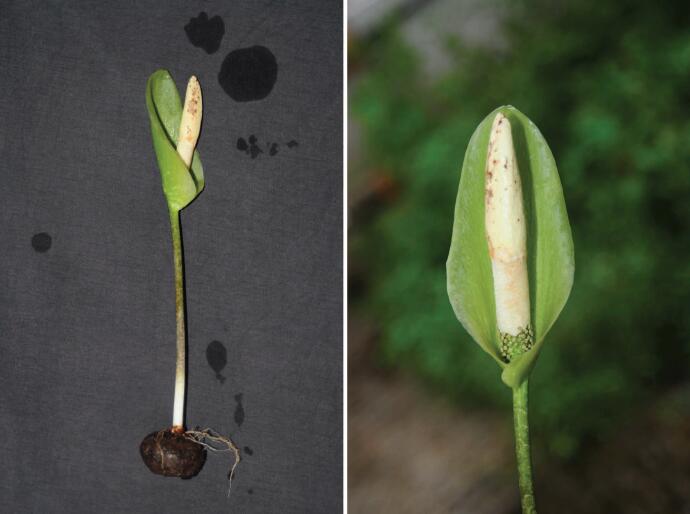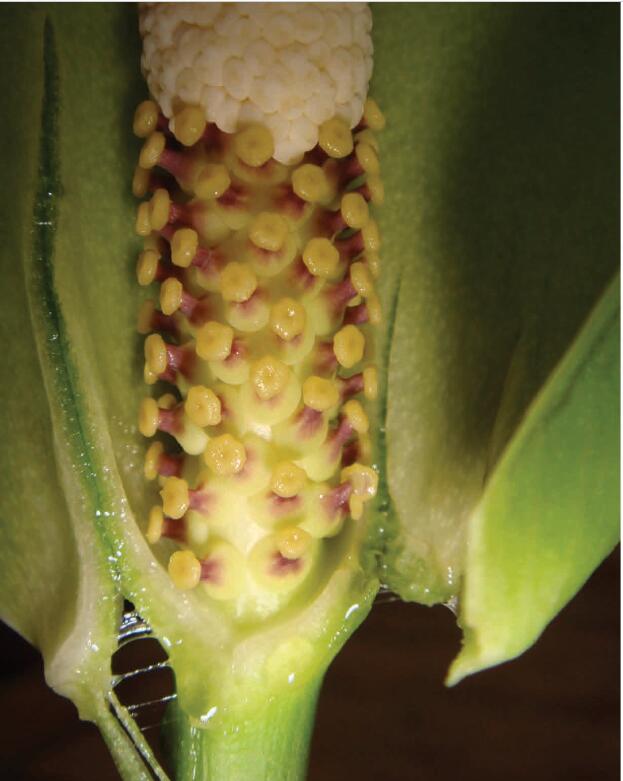
The Araceae are rhizomatous or tuberous herbs comprising about 110 genera and 1,800 species, usually with calcium ocalate crystals or raphides and commonly with milky sap. Amorphophallus is a genus of about 200 species, of which 16 occur in China. Of these, seven species are endemic to China.
Researchers from Xishuangbanna Tropical Botanical Garden (XTBG) found a new species of Amorphophallus and named it as Amorphophallus bubenensis J.T.Yin & Hett., sp. nov.. The new species adds the 8th endemic species to this flora.
The new species is herb tuberous and semi-evergreen. The tuber is subglobose and the leaf appears without inflorescence. The petiole is terete and the lamina is about 70 cm in diameter. Its anterior segment is shorter than posterior ones and consists of only one elongate elliptical leaflet. Its spadix is shorter than spathe and produces a light soap-like fragrance during female anthesis, sessile. Its female zone is cylindrical and contiguous with male zone and the pistils are slightly congested. Its ovary is subhemisperical and the style is cylindric. Its stigma is disciform, penta- to hexagonal with slightly concave sides and broadly obtuse angles (lobe apices), and the surface is verruculose with a shallow central depression, dirty yellow. The flowers are congested and the number of stamens per flower is indeterminable.
The new species is found in Buben (Bubeng), Mengla County, Yunnan, China. It grows in humid dense tropical forest at an elevation of 500–800 m and flowers in July.
The study “Amorphophallus bubenensis (Araceae), a new species from Yunnan, China” has been published in Phytotaxa.



86-10-68597521 (day)
86-10-68597289 (night)

86-10-68511095 (day)
86-10-68512458 (night)

cas_en@cas.cn

52 Sanlihe Rd., Xicheng District,
Beijing, China (100864)

